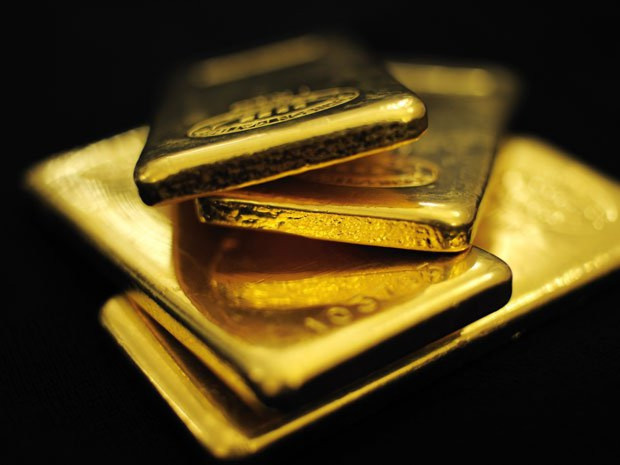Gold To Extend Decline in Short Term as ETP Rout Extends, A Bloomberg Survey Says

Gold is expected to see rough weather in the short-term following an extended sell-off -- now stretching to 17 weeks -- in exchange-traded products, or ETPs, backed by the precious metal, and as gold-hungry India deals with another increase in import duty.
According to 18 analysts surveyed by Bloomberg, 14 expect prices to decline next week, the largest proportion of bears since May 17, while four remained neutral. Gold-backed ETPs have seen outflows of 490.4 metric tons valued at $21.8 billion since February 8, and now stands at 2,124.7 metric tons, the lowest level since April 2011.
The precious metal was trading at $1,384.95 an ounce by 11:06 a.m Singapore time (11:06 p.m. EDT), 28 percent below its all-time high recorded in September 2011.
After rising for 12 consecutive years, the precious metal entered bear market in April after plunging more than 20 percent from its all-time high of $1,921.15 recorded in September 2011, hurt by a variety of negative factors, which have built up over the past few months.
Gold prices have been on the decline as signs of economic recovery in the U.S. -- the world’s largest economy -- strengthened the U.S. dollar, which has an inverse relationship with gold. Speculation that the Federal Reserve might phase out its bond-buying program also helped the greenback grow stronger.
Gold prices were also weighed down after the Indian government raised import duties on gold for the second time this year to 8 percent in a bid to curb demand for the precious metal, and to reduce the country’s gaping current account deficit. India, the world’s largest buyer of gold, imported 162 tons in May, up from 143 tons in April.
“The measures taken by the government will work because gold has been made more expensive, and in the next two-three months we should see gold imports coming down,” Dharmakirti Joshi, chief economist with Crisil Ltd., the Indian unit of Standard & Poor’s, told Bloomberg. “Many people had frontloaded purchases because of the price drop, and if inflation declines then the attractiveness of gold as a hedge will drop further.”
Since the 2008 financial crisis, central banks around the world took extraordinary measures to stimulate growth, raising fears about high inflation and leading investors to buy gold as a hedge against inflation, which, in turn, fueled a rally in gold prices.
Now, slowing growth in China, which also is a major importer of gold, has hurt demand for the yellow metal. And, with inflation increasing at a rate of less than 2 percent in developed economies, demand for gold as a hedging instrument has greatly been reduced.
© Copyright IBTimes 2024. All rights reserved.





















